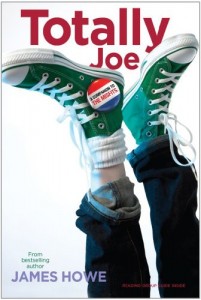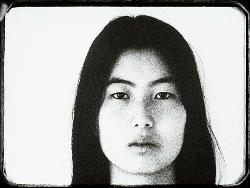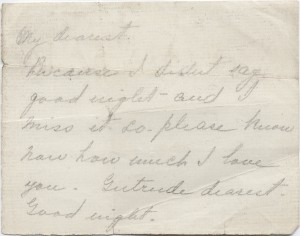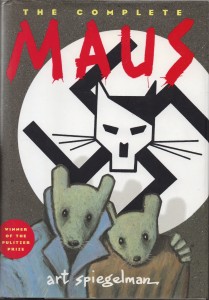Proposal
Writing is an important skill for students to hone and develop in ELA Class. Often in middle school students are reluctant writers. They are overwhelmed by the idea of filling out lines and lines of loose-leaf paper. With the focus of education in the United States turning towards the Common Core, more rigorous standards are being set for writing. Students are expected to produce quality and quantity in their writing. Many of these prompts they are given in school and on these Common Core assessments lack relevance in their lives.
I propose for my project creating a series of lesson plans, which I will use in my writing class, that bring relevance to writing for my students. I would like to create an “Alphabiography “ project, where my students can reflect on events in their lives that have impacted them. By writing about their own experiences the writing will be relevant, cathartic, and boost their self-efficacy when it comes to writing. They will be asked to reflect on the themes of loss, rejection, friendship, family, self-concept, and success. My theme throughout the year in Reading Class and Writing Class is perception, through the lens of race, class, and gender, and my students will be asked to specifically write about these three themes. I think this will be an extremely beneficial project for most of my students. Growing up in a poor urban community, they have dealt with a lot of pain and hardship even at the age of 13, and this could prove quite therapeutic.
I have begun researching different articles to help me make this project a success. They will be working on it over the span of 4 weeks and I would like to create a meaningful writing experience for them. Below is the research I have found beneficial thus far. I will continue to explore more avenues and read more about scriptotherapy.
Annotate Bibliography (Thus Far)
Dyer, Daniel. “When Kids Are Free to Write.” The English Journal 65.5 (May, 1976):34-41. Web.
Dyer argues that teachers don’t always assign writing by sense, rather they choose the topics by how they sound. To examine the way students approach writing, Dyer conducted an experiment where he allowed his students to write whatever they wanted on Fridays. They could write anything from a journal entry to a fictional story, the choice was theirs. Dyer found that most of his students consistently chose to focus on Life Writing, particularly the female students. The majority of female students used life writing as a way of confronting reality. They wrote letters to Dyer and journal entries, which allowed them to open up. Their writing became a way to express their concerns about what they were going through. Life Writing in Dyer’s class gave students autonomy over their work. I would like my “Alphabiography” project to have the same effect on my students. I would like them to try to write down events that have caused them concern, and reflect on them. In the same way, I want them to be able to reflect on joyous events as well.
Ellen, Kathy. “History in the Making: Writing for Real Audiences.” English Journal 79.7 (1990): 72-89. Web.
Ellen’s article focuses on creating writing assignments that are purposeful and intended for a “real” audience. The idea of a real audience is an audience that benefits from the students writing. She touches upon various formats for writing such as letters, school-wide anthologies, interviews, and diary entries. The segment that is most beneficial to my “Alphabiography” project is one that focuses on familial writing. Ellen argues that writing about events that took place with family members helps students to find value in their writing. When students are able to look back on a familial event they begin to preserve value into their event, by recounting the story they are preserving a memory and strengthening the value and the bonds of family. This article inspired me to incorporate the theme of family into the assignment
Karpiak, Irene. “Writing Our Life: Adult Learning and Teaching through Autobiography.” Canadian Journal of University Continuing
Education 26.1 (Spring, 2000): 31-50. Web.
Karpiak’s article focuses on autobiography as a way to inform authors of the importance of the events in their life and the lessons learned from these events. She explains that the act of the writer recollecting on an impacting event and writing about it allows them to see things from a new perspective. It helps them to digest what has happened in their lives and what is currently going on in their lives. Writers create a “self-portrait” of themselves, which they view and analyze. Her argument supports my theory that students writing a form of autobiography will function as a vehicle for helping them make sense of what is going on in their lives, at a difficult point in middle school. Karpiak views the writing of autobiography as experiential and of value. She argues that autobiography asks you to draw meaning from events in your life, which poses as beneficial for students.
King, Laura A. “The Health Benefits of Writing about Life Goals.” Personality and Social Psychology Bulletin 27.7 (2001): 798-807.
King discusses in her article that writing has three major benefits, catharsis, insight, and self-regulation. She argues that writing about specific events in a person’s life helps them to gain insight into their emotions or reactions during the event, and then think about how their own mental state. Writing can offer an emotional release, where one recalls a certain event, comes to terms with it, and releases all negative emotions through the process of writing. She continues to explain that writing can even help a person to self-regulate their emotions and their attitude. While King’s main focus is the writing of goals, her theories of catharsis, insight, and self-regulation I find inspirational for how I want my students to view this project. I think it is important to share these theories behind writing and it’s benefits with the students prior to the project.
Klassen, Rob. “Writing in Early Adolescence: A Review of the Role of Self-Efficacy Beliefs.” Educational Psychology Review 14.2 (2002) 173-203. Web.
Klassen argues that life writing is important to help build confidence in the child, being that a lack of confidence can inhibit writing abilities. Children may have the ability to write well and articulate themselves, but a lack of confidence can hold them back and provide them with a dislike of writing. Students build self-efficacy through writing about life events, they are motivated, and they feel that they can be successful. He discusses Bruning and Horn’s theory on creating valued writing projects. They need to nurture practical beliefs about writing, create engagement through writing that is authentic, provide a supportive context, and create an positive emotional environment for writing. An “Alphabiography” project can fulfill all these criteria, and promote writing that is authentic.
Project Inspiration!





 ppeal to my students. It has also fostered their curiosity in learning that a memoir can be read in the form of graphic novel. The lines that separate genre have become blurred to them, and they are left very puzzled and asking very poignant questions (I love it).
ppeal to my students. It has also fostered their curiosity in learning that a memoir can be read in the form of graphic novel. The lines that separate genre have become blurred to them, and they are left very puzzled and asking very poignant questions (I love it).

